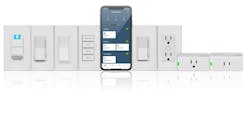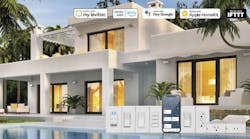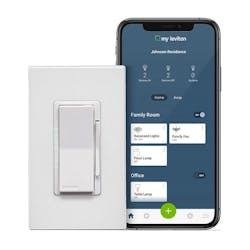3 Ways the Pandemic Is Changing Smart Homes
After the past year of staying in and working, learning, exercising and more all from home, consumers have drastically changed the way they’re living within their spaces. In essence, the pandemic made our homes more important to us than ever. Realtor.com recently found that many homeowners chose to integrate more technology into their home to make their spaces work more efficiently, with 41% of consumers having purchased devices that enhanced their quality of life throughout the pandemic. And one of the most popular types of smart-home devices that emerged out of the pandemic was voice assistant technology like Hey Google, Amazon Alexa, or Apple Siri. In 2020 alone, there were 4.2 billion digital voice assistant devices in use worldwide (according to SEMRush’s Artificial Intelligence Statistics for 2021 and Beyond).
While popularity certainly increased during the pandemic, smart home technology has been steadily increasing in homes across the U.S. over the past decade. Now, whether it be the need for flexibility in home offices or how we choose to interact with our appliances and lighting, this trend is only expected to grow. In fact, digital assistant usage worldwide is expected to double to 8.4 billion by 2024 (according to that same SEMRush study).
With this trend forecast in mind, we’ve outlined three ways the pandemic has impacted the smart homes and what builders should consider in the future as you continue creating smarter and more convenient homes.
1. There is an increased volume of connected devices throughout homes.
Not only is the demand for smart home devices increasing, but so is the number of devices homeowners and buyers are looking to integrate in their homes. One way to ensure homeowners are set up for success when it comes to smart devices – not only at the time of purchase and move-in but also as they grow into their homes – is by choosing a brand partner that has capabilities to support whole-home solutions. For example, the Decora Smart product line from Leviton allows users to automate dozens of lights, fans, electronics and small appliances throughout the whole home or individual rooms via schedule, voice control or in the My Leviton app when home or away. App control offers a single source no matter how big or small the home or the number of connected devices, making it an ideal option for buyers to scale the number of devices in the future as well.
2. Everyday activities and household tasks are streamlined with smart home technology.
While spending more time at home, many have chosen to automate tedious tasks with smart devices, and these tasks are now becoming second nature. Coffee shop stops have transitioned to at-home brews automated with a well-designed “Good Morning” routine with smart home devices, making tasks like gently increasing the brightness of lights and turning on the coffee machine a breeze – even from bed. As homes became the fitness center of choice for many, automating a smart thermostat, smart speakers and a Wi-Fi enabled ceiling fan controller, allowed homeowners to create an atmosphere tailored specifically them and their family’s preferences.
For builders looking to offer these smart home options to their buyers, it’s equally important to ensure the devices you’re choosing can and will be compatible with other smart home brands. This allows homeowners the option to add as many devices in their daily routines as possible, thus increasing the convenience factors.
3. Homeowners will rely on their smart home devices for peace of mind.
As many start to return to the office for work or travel with family this summer, the anxiety of wondering if you turned the light off or unplugged the curling iron is creeping back in. Simple “on the way out” tasks that used to be second nature are now more likely to be forgotten, but smart home technology can play a role in easing the mind.
By strategically placing voice-controlled devices in convenient areas throughout the home, a busy homeowner can run out of the door quickly turning off all the lights without having to run to different rooms, simply by saying “Alexa, turn all lights off.”
Or even if a consumer has already left for the day, including app-controlled devices allows them to easily view their home’s connected devices from their phone and provides the option of turning lights or small appliances on/off remotely. These smart lighting solutions can also be scheduled to turn off about 30-minutes after a homeowner’s usual departure team each day – allowing for ultimate convenience and peace of mind.
We’ve seen the demand for smart home technology increasing drastically over the last year. In fact, four-in-ten Americans have indicated that they were more interested in adding smart-home features or devices to their residences (according to Realtor.com). With people continuing to adapt in all aspects of their lives, smart technology will continue to change the way people enjoy their homes in the years ahead. A year ago, the possibilities of smart home systems certainly increased sales, but it’s time to adapt a more holistic, whole home approach to match consumers’ lifestyles where they are.
For more information on how to incorporate smart lighting solutions for a modern smart home, visit Leviton's Residential Builders site.



